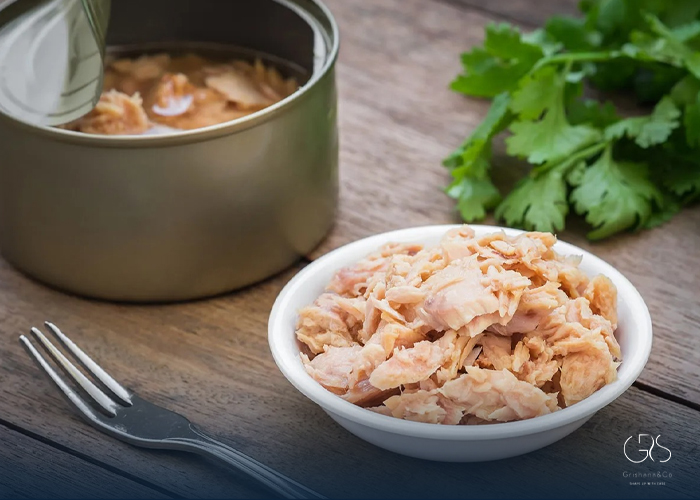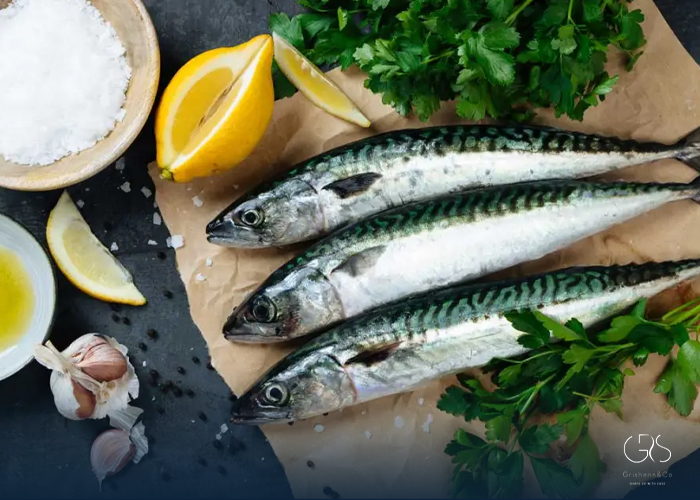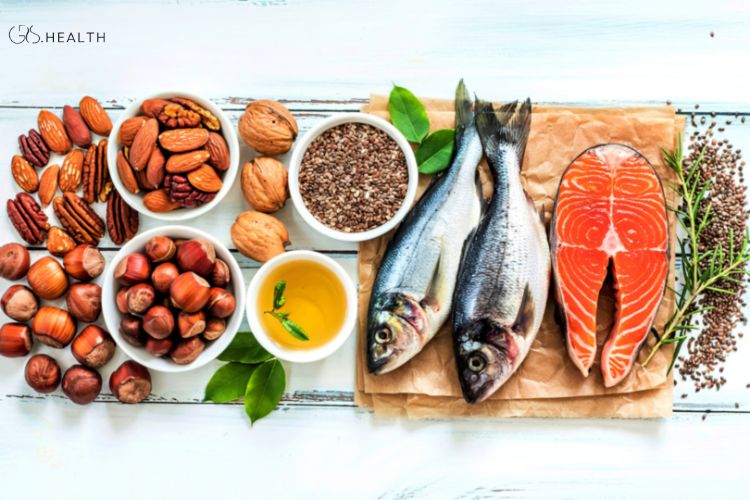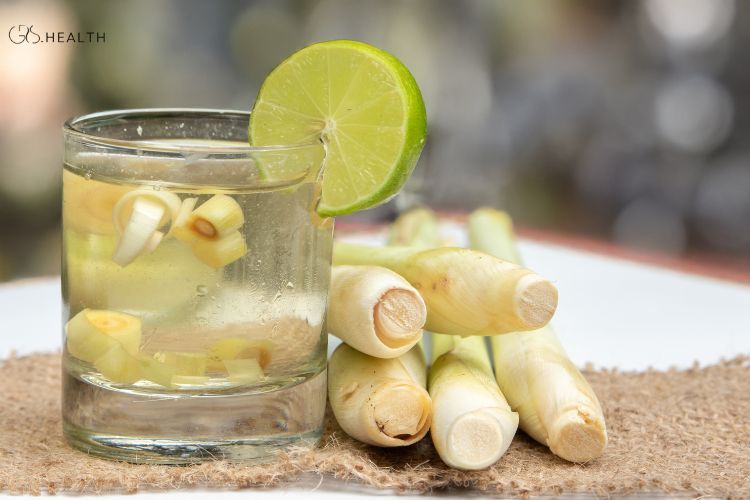Fish is a popular and nutritious source of protein that is enjoyed by people all over the world. Not only is fish readily available in various forms, but it also provides essential nutrients and omega-3 fatty acids. In particular, fish is well-known for being a high-quality source of protein that can help in muscle building and repair. This article aims to explore 12 high protein fish that are good sources of protein, while also considering diverse perspectives on their consumption.
The Importance of Protein in Fish
Protein is an essential macronutrient that plays a crucial role in various bodily functions, such as muscle development, immune system function, and tissue repair. According to the Dietary Guidelines for Americans, it is recommended that adults consume 5 to 6.5 ounce-equivalents of protein foods per day, with at least 8 ounces of seafood per week, based on a 2,000 calorie diet.
Fish, in particular, is known for its high-quality protein content. Protein in fish contains all the essential amino acids that the body needs, making it a complete protein source. Additionally, fish is generally lower in saturated fats compared to other animal protein sources, making it a heart-healthy option.
With its numerous health benefits, consuming high protein fish can be a great way to maintain a balanced and nutritious diet.
12 High Protein Fish
1.Salmon
Salmon is an excellent source of protein, with a 3 ounce (85g) serving containing approximately 22 grams of protein. In addition to its high protein content, salmon is also rich in omega-3 fatty acids, which are beneficial for heart health and brain function.

2.Tuna
Tuna is another fish that is rich in protein, with a 3 ounce (85g) serving providing around 20 grams of protein. Tuna is a versatile fish that can be enjoyed in various forms, such as canned, grilled, or seared.

3.Sardines
Sardines are a small, oily fish that are packed with protein, with a 3.2 ounce (92g) serving containing approximately 21 grams of protein. They are also a good source of omega-3 fatty acids and calcium (National Institutes of Health).
4.Cod
Cod is a mild-flavored white fish that is high in protein, with a 3 ounce (85g) serving providing about 15 grams of protein. Cod is known for its versatility and can be baked, grilled, or pan-seared.
5.Haddock
Haddock is another white fish that is rich in protein, with a 3 ounce (85g) serving containing approximately 16 grams of protein. It is commonly used in fish and chips and can also be baked or broiled .
6.Trout
Trout is a freshwater fish that is high in protein, with a 3 ounce (85g) serving providing around 19 grams of protein. It is also a good source of potassium and vitamin D, making it a nutritious choice for overall health .
7.Halibut
Halibut is a lean fish with a firm texture that is rich in protein, with a 3 ounce (85g) serving containing approximately 22 grams of protein. It is also a good source of magnesium and vitamin B12 (National Marine Fisheries Service).
8.Mackerel
Mackerel is an oily fish that is high in protein, with a 3 ounce (85g) serving providing about 20 grams of protein. It is also rich in omega-3 fatty acids, making it beneficial for heart health .
9.Tilapia
Tilapia is a mild-tasting white fish that is a good source of protein, with a 3 ounce (85g) serving containing approximately 21 grams of protein. It is a popular choice for its affordability and versatility in cooking.
10.Barramundi
Barramundi, also known as Asian sea bass, is a nutrient-dense fish that is high in protein, with a 3 ounce (85g) serving providing around 23 grams of protein. It is also a good source of omega-3 fatty acids, vitamin D, and potassium.
11.Snapper
Snapper is a popular white fish that is rich in protein, with a 3 ounce (85g) serving containing approximately 23 grams of protein. It is a versatile fish that can be grilled, sautéed, or used in various seafood recipes .

12.Swordfish
Swordfish is a meaty and flavorful fish that is high in protein, with a 3 ounce (85g) serving providing about 20 grams of protein. It is also a good source of selenium, vitamin D, and niacin .
(For a comprehensive understanding of Low Vitamin D Symptoms, please refer to this article.)
Diverse Perspectives on Consuming High Protein Fish
While fish is a valuable source of protein and other essential nutrients, it is important to consider diverse perspectives on its consumption. Environmental sustainability, mercury content, and ethical fishing practices are some of the factors that are worth considering when consuming high protein fish.
Environmental Sustainability
Fish consumption contributes to the demand for seafood, and overfishing can result in environmental issues such as depletion of fish stocks and disruption of marine ecosystems. Sustainable fishing practices and responsible consumption of seafood are crucial for maintaining a healthy marine environment and preserving fish populations for future generations (National Oceanic and Atmospheric Administration).
Consumers can support sustainability by choosing seafood that is labeled as sustainably sourced and from well-managed fisheries. This can help promote responsible fishing practices and reduce the negative impact on the marine environment.
Mercury Content
Certain larger species of fish, such as swordfish and tuna, may contain higher levels of mercury due to biomagnification in the food chain.
Mercury is a toxic metal that can have adverse effects on human health, especially for pregnant women and young children. It is important for consumers to be aware of the mercury content in the fish they consume and make informed choices based on health recommendations.
Ethical Fishing Practices
Ethical considerations, such as the treatment of fish and working conditions of fishing communities, are also important factors in the consumption of high protein fish. Sustainable and ethical fishing practices focus on minimizing harm to aquatic ecosystems and ensuring fair labor practices within the fishing industry (Marine Stewardship Council).
Consumers can look for certifications from organizations such as the Marine Stewardship Council (MSC) and Aquaculture Stewardship Council (ASC) to ensure that the fish they purchase have been sourced responsibly and ethically.
Conclusion
Fish is an excellent source of high-quality protein that offers numerous health benefits, including muscle building, heart health, and overall nutrition. The 12 high protein fish mentioned in this article provide valuable protein content along with essential nutrients, making them a valuable addition to a balanced diet. However, it is important for consumers to consider diverse perspectives, including sustainability, mercury content, and ethical fishing practices when choosing and consuming high protein fish.
By making informed choices and supporting responsible fishing practices, individuals can enjoy the nutritional benefits of fish while contributing to the preservation of marine ecosystems and the well-being of fishing communities.
Sources
- National Library of Medicine, Protein and amino acid requirements in human nutrition
- American Heart Association, Fish and Omega-3 Fatty Acids
- U.S. Department of Agriculture, Fish, salmon, Atlantic, farmed, cooked, dry heat
- National Institutes of Health, Vitamin A










